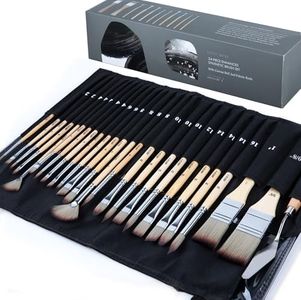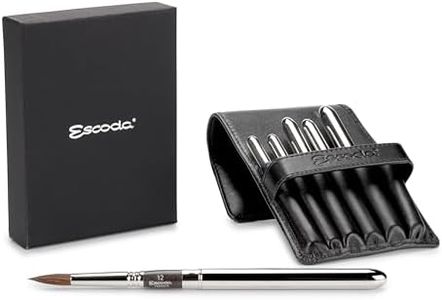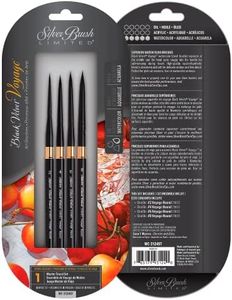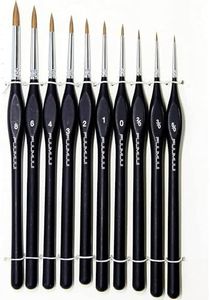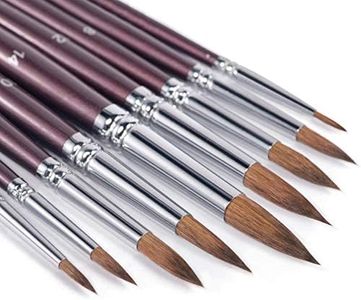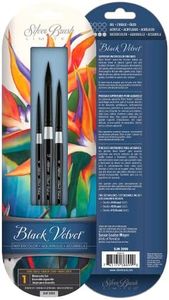We Use CookiesWe use cookies to enhance the security, performance,
functionality and for analytical and promotional activities. By continuing to browse this site you
are agreeing to our privacy policy
10 Best Watercolor Brush Set
From leading brands and best sellers available on the web.Buying Guide for the Best Watercolor Brush Set
Choosing the right watercolor brush set can really enhance your painting experience, whether you’re a beginner or more advanced artist. Watercolor brushes come in various shapes, sizes, and materials, and the right combination will help you achieve different strokes and textures. Understanding the main features that set these brushes apart will make selecting the best set for your style and needs much easier.Brush Hair MaterialThe material of the brush hairs affects how much water and pigment the brush can hold and how smoothly it applies paint to paper. There are natural hair brushes (like sable or squirrel) and synthetic brushes. Natural hair tends to carry more water and gives a softer touch, which can be great for washes and gradients, while synthetics are often more affordable and durable, making them ideal for beginners or artists who use thicker paint. Choose natural hair for maximum softness and water retention, or synthetic for easy maintenance and reliable shape.
Brush ShapeThe shape of the brush head, such as round, flat, filbert, or mop, determines what kinds of marks and details you can easily make. Round brushes are the most versatile and work well for lines, washes, and details. Flat brushes are good for bold strokes or covering large areas. Mop brushes hold large amounts of water for broad washes. When choosing a set, think about the types of effects you most enjoy—varied shapes will help you experiment and find your style.
Brush SizeBrush sizes are usually numbered, with smaller numbers for thin, detailed work and larger numbers for washes and broader strokes. A balanced set will offer a range of sizes so you can switch between fine details and larger background washes. If you tend to create small, detailed paintings, lean towards a set with more small and medium brushes; for large, loose work, ensure your set includes several big brushes.
Brush Handle LengthHandles come mainly in short or long lengths. Short handles offer more control and are ideal for desk work and precise painting, usually preferred for watercolor. Long handles are more common in brushes designed for larger canvases or easel work, typical in oil or acrylic painting. For most watercolor work, short handles will feel more natural and comfortable.
Ferrule QualityThe ferrule is the metal part that holds the bristles together and attaches them to the handle. Good quality ferrules are seamless and securely crimped, preventing hair shedding and ensuring the brush lasts. Poor-quality ferrules might rust or loosen over time. Look for brushes with sturdy, well-attached ferrules to avoid frustration and get better value.



